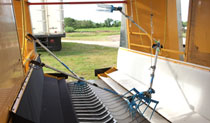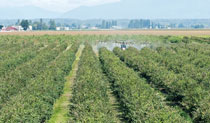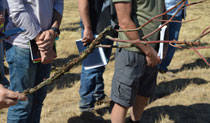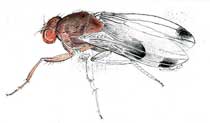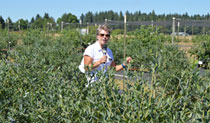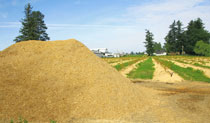Sawdust Shows Multiple Benefits in Weed Mat Trial
Want to cut down on vole damage in your blueberry plantings? Think sawdust.
According to a report at the 2018 Blueberry Field Day at the North Willamette Research and Extension Center, a weed mat trial is showing that not only does the addition of sawdust under weed mat lower soil temperature on hot days and increase root size over the use of weed mat alone, it lowers the presence of visible vole runs.
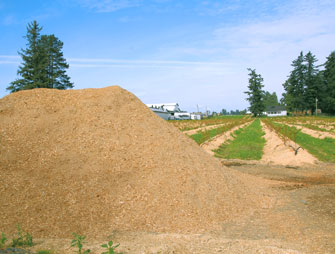 |
In the trial, Oregon State University Professor and Extension Berry Crop Specialist Bernadine Strik and Senior Faculty Research Assistant Amanda Vance are evaluating the effects of mulch types on soil temperature, root and shoot development, early yield, plant-nutrient uptake, as well as assessing the impact of mulch type on crop water use over the growing season.
The researchers are looking at use of black and green colored weed mats with and without the addition of sawdust underneath compared to sawdust applied without weed mat.
The trial was planted to the Duke variety in October of 2016.
The researchers found that in sampling soil temperature last year the mulches consisting of weed mat (with or without sawdust) had higher soil temperatures than under sawdust alone. They also found that when measuring soil temperature on a hot day, it was significantly higher under weed mat without sawdust than under weed mat with sawdust.
When measuring plants in October, plants grown with the combination of sawdust and weed mat (either color) were significantly taller than plants grown with sawdust alone and slightly taller than plants grown with weed mat alone. They found no difference in plant diameter. And in plants dug in February of this year, they found plants with black weed mat had significantly smaller root volumes than those grown in black weed mat plus sawdust.
In leaf sampling, the researchers found few differences in nutrient uptake. The biggest mulch effects on nutrient content, in fact, were found in the crowns. Crowns from plants grown under black and green weed mat had less P and K than plants from the black weed mat plus sawdust mulch. They also found that plants grown under black weed mat had lower total plant dry weight, N, P, K and other nutrients than plants grown under black weed mat plus sawdust.
Hand harvest had just been completed on the second growing season while Strik talked about the trial. She said the trial’s plants average a yield of 0.75 kilograms per plant, with a berry size of 2.3 to 2.6 grams and Brix of 13 to 16 percent. The lowest yielding treatments were sawdust alone and black weed mat alone. The highest yielding treatments were black or green weed mat plus sawdust.
Strik also noted that a lot of growers are using black weed mat as a mulch in the row to economically manage weeds. However, voles have been more of a problem. Using sawdust underneath the weed mat is looking promising at lowering that pressure, she said.
Research also has shown that spotted wing drosophila pressure is lower when black weed mat is used compared to sawdust.
The researchers plan to continue looking at the effects of different mulches next year.
| FALL 2018
|

